From Ground to Saddle: Backing Your Young Horse
The process of backing your young horse is one of the most important moments in a young horse’s journey. Backing is a significant step in the lifelong partnership between the horse and rider. This initial experience sets the tone for the horse’s attitude towards its training and future riders, making it a process that needs patience, understanding, and, most importantly, a deep understanding of your horse’s physical and psychological readiness.
This post will share insights I have learn from many years of experience in backing young horses. From preparing the groundwork to the meaningful moment of establishing a genuine rider-horse connection, each step is a testament to the incredible journey of trust and learning that both the horse and rider undertake. Whether you’re a seasoned equestrian or a novice in the world of horse training, understanding the nuances of this critical phase is essential for the development of a happy, well-trained horse.

Understanding the Young Horse
Before looking at the practical steps of backing your young horse, it is very important to understand their psychological and physical characteristics. Young horses are still developing and this growth profoundly influences their training.
Psychological Characteristics: Young horses are naturally curious yet cautious, a duality that defines their approach to new experiences. Their minds are impressionable; they are learning to interpret and respond to their environment. This stage is where trust and fear can take root, making our approach in their early training so important. A young horse can be eager to please but can also experience anxiety or confusion when faced with unfamiliar situations. This sensitivity requires us to be consistent and patient in all our interactions.
Physical Characteristics: Physically, young horses are still growing and developing. Their muscles, bones, and joints are not fully formed, which means they cannot endure the same level of physical stress as an older horse. This growth stage must be respected to avoid injury and ensure long-term health and athleticism. It’s also important to remember that each horse matures at a different pace and their training should be tailored to their individual developmental stage rather than a predetermined timeline.
The Importance of Trust and Bonding: Before the backing process begins, establishing a foundation of trust and bonding is very important. This bond develops through consistent and positive interactions. Groundwork plays a crucial role here – that is where you and your horse learn to communicate, understand cues, and build mutual respect. Activities like grooming, leading, and basic ground-based training help in forging this essential connection.
A young horse is a blank canvas. The initial sessions of training and interaction will set the tone for their future. It’s not just about training a horse to accept a rider; it’s about nurturing a willing and confident partner who trusts you as much as you trust them. The time and effort invested in understanding and bonding with your young horse will pay dividends when you eventually move to the backing process, ensuring it’s a positive experience for both of you.

Preparation for Backing
Thorough and thoughtful preparation is essential before starting to back your young horse. This stage is not just about physical readiness but also about creating a framework of trust and understanding that will make the transition to carrying a rider as smooth as possible.
Essential Groundwork: Lunging, Leading, and Desensitization
Groundwork is the cornerstone of pre-backing preparation. It establishes a language of communication between you and your horse, reinforcing commands and cues that will be crucial when you eventually mount.
- Leading: Teaching a young horse to follow cues while leading is fundamental. It instills discipline and sets the stage for a respectful relationship where the horse understands you as the guide.
- Desensitization: Young horses can be nervous and sensitive to new stimuli. Gradual desensitization to various sights, sounds, and sensations is essential. This includes gentle exposure to handling of all body parts, sounds of equipment, and different environmental conditions.
- Lunging: This helps in building fitness, balance, and the understanding of basic commands such as ‘walk’, ‘trot’, and ‘halt’. It’s also an excellent way for the horse to expend excess energy before more focused training sessions.

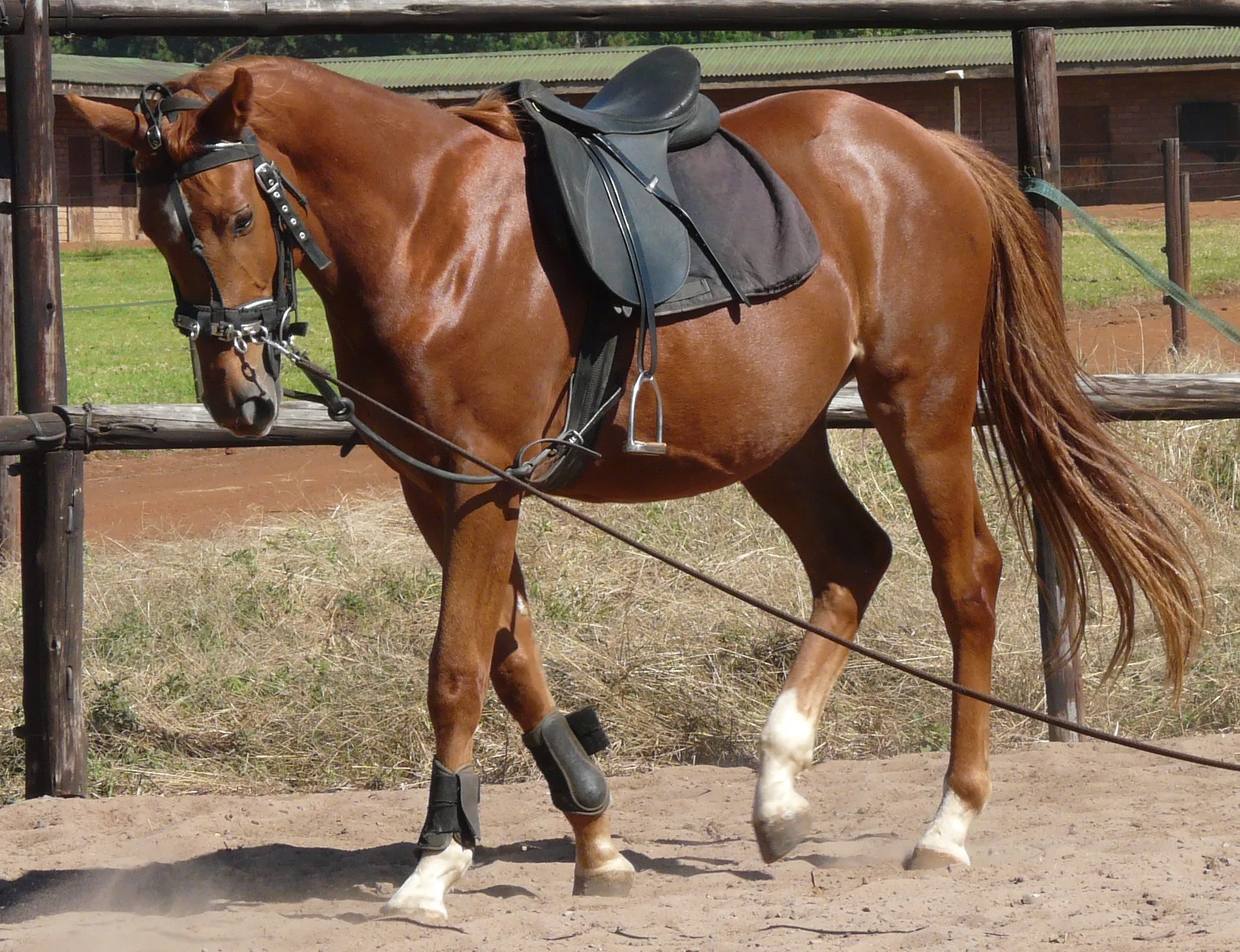
Introducing Tack: Familiarizing the Horse with a Saddle and Bridle
Introducing tack should be a gradual and positive experience. Start with allowing the horse to sniff and inspect the saddle and bridle. Then, gently place the saddle on the horse’s back, ensuring it’s a comfortable fit. The bridle introduction should be equally gentle, ensuring the bit does not cause discomfort. This phase may take several sessions – patience here is key.
Importance of Health Check: Ensuring the Horse is Physically Ready
A comprehensive health check by a veterinarian is crucial before backing begins. This check ensures the young horse is physically mature and ready to bear weight. The vet can assess the horse’s musculoskeletal development, checking for any signs of discomfort or potential issues that could be exacerbated by riding. This is also a good time to discuss nutritional needs with the vet, as a growing horse will have different requirements compared to an adult horse.
Remember, rushing through these preparatory stages can lead to setbacks. Each young horse will progress at their own pace, and it’s important to tailor your approach to their individual needs and comfort levels. The groundwork you lay during this phase is not just for the initial backing but forms the foundation for all future training.
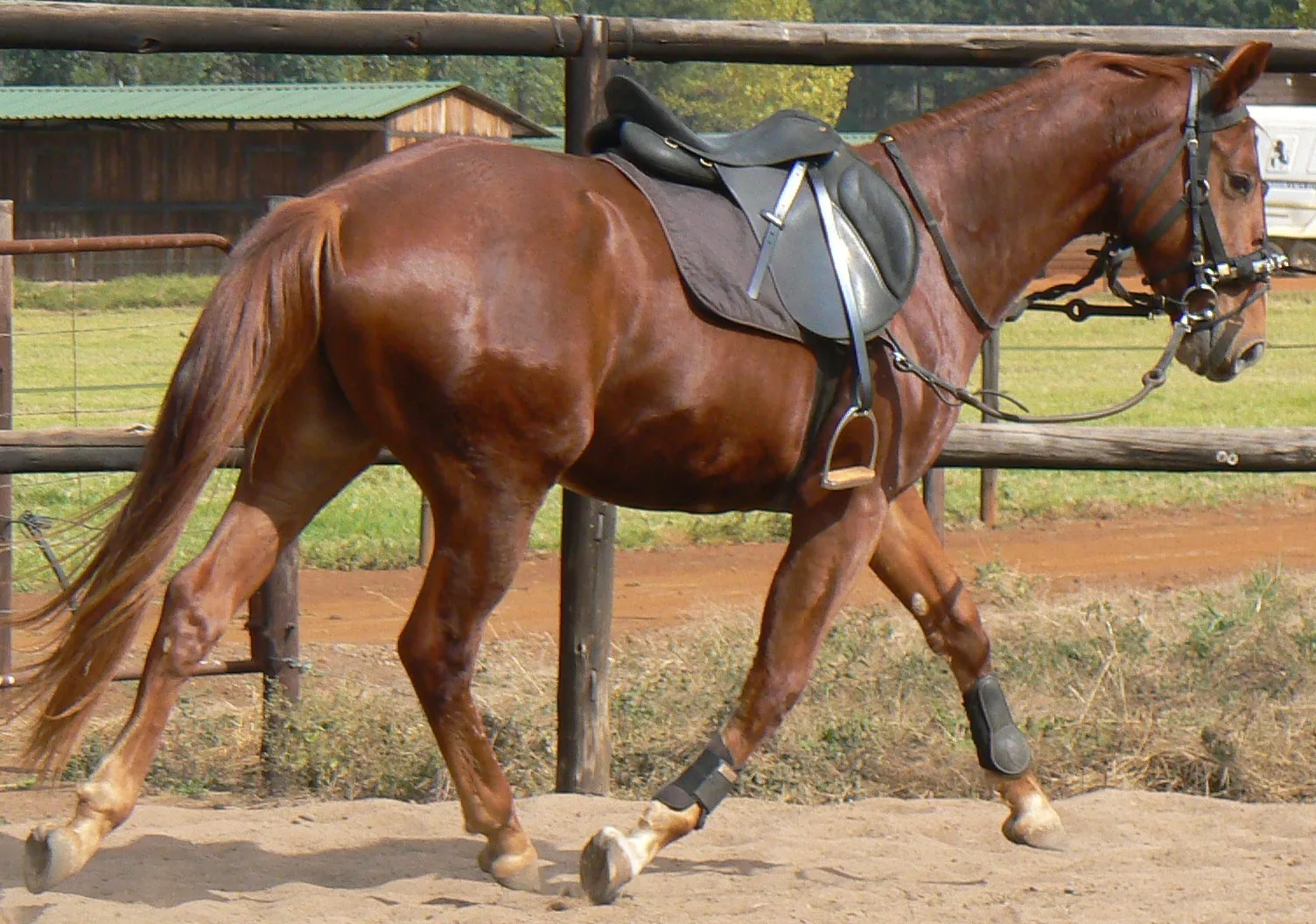
Choosing the Right Environment and Equipment
The setting and gear you choose for the first backing are as critical as the physical and mental preparation of the horse. They not only ensure safety but also contribute to the confidence and comfort of both horse and rider during this significant step.
Selecting a Safe, Enclosed Area for the First Backing
The ideal location for the first backing should be a familiar, enclosed, and safe area. This could be a quiet, enclosed arena or a paddock where the horse feels comfortable. The enclosure should be large enough for the horse to move freely but not so large that it feels overwhelming. This space must be free from distractions and potential hazards, such as loose equipment or uneven ground, which could startle the horse or pose a safety risk. The familiarity of the environment helps in keeping the horse calm and focused, making the experience more positive.
Appropriate Tack and Protective Gear for Both Horse and Rider
Choosing the right tack is essential for the safety and comfort of both you and your horse. For the horse, a well-fitting saddle and bridle are crucial. Ensure that the saddle fits properly and does not pinch or chafe. A soft, well-fitting bit and a comfortable bridle are equally important to avoid causing distress or discomfort to the horse.
For the rider, wearing the appropriate protective gear is non-negotiable. A certified riding helmet should be worn at all times to protect against head injuries. Additionally, wearing a body protector can offer added safety, particularly during the initial sessions when the risk of falls can be higher. Even if you are an experienced rider, it is important to prioritize safety to set a good example and to mitigate any unforeseen risks.
Lastly, consider the use of safety stirrups or breakaway stirrups, especially in these early stages. These can prevent the foot from getting caught in the stirrup in the event of a fall, offering an additional layer of safety.
The right environment and equipment are essential in creating a secure and positive atmosphere for backing. They not only safeguard the physical well-being of both horse and rider but also aid in building the confidence that’s essential for a successful backing experience.

The Backing Process
Backing a young horse requires patience, understanding, and a systematic approach. Each step should be taken with care, ensuring that your horse remains comfortable and confident throughout the process.
Step-by-Step Guidance on the Backing Process
- Building Up to Mounting: Before even attempting to mount, spend several sessions getting the horse used to the weight and feel of a human. This can be done by leaning over the horse while it’s saddled, gradually increasing the time and pressure, making sure you have someone on the ground to help you lean over the horse and to reassure the horse that all is good.
- First Mount: Choose a day when your horse is calm and receptive. Begin by standing on a mounting block beside the horse, gently laying your weight across the saddle without swinging your leg over. Reward and reassure your horse for its calmness and the person on the ground has control of the horse.
- Full Mount: Once your horse is comfortable with your weight across its back, it’s time to gently swing your leg over and sit in the saddle. Keep your weight centered and balanced to avoid causing any discomfort. Remain seated for a short time initially, gradually increasing the duration.
- First Steps: With the handler leading, ask the horse to take a few steps forward. Keep your movements minimal and your demeanor calm to instill confidence in the horse. Praise and reward for each small achievement.
- Progressing to Riding: As your horse gains confidence with a rider on its back, you can start to take more control. Begin with directing the horse in simple turns and halts, always ensuring that the cues are gentle and clear.

Techniques for Mounting for the First Time
- Use a mounting block or a handler to help to avoid putting unnecessary strain on the horse’s back.
- Ensure the horse is securely held by a helper.
- Move calmly and confidently – your horse can sense your emotions and will react accordingly.

Tips on How to Read the Horse’s Reactions and Adjust Accordingly
- Watch for signs of discomfort or fear, such as pinned ears, flaring nostrils, or tensing muscles. If you notice these, pause, reassure the horse, and only proceed when it has relaxed.
- Pay attention to positive signs like a relaxed posture, chewing, or a soft eye. These indicate acceptance and comfort.
- Always end on a positive note. If you encounter resistance, take a step back to a point where your horse is comfortable and end the session there.
Remember, the backing process is not a race. Each horse will respond at its own pace, and it’s crucial to respect that individual timeline. The goal of these early sessions is not just to get the horse used to a rider but to reinforce trust and build a foundation for all future training.
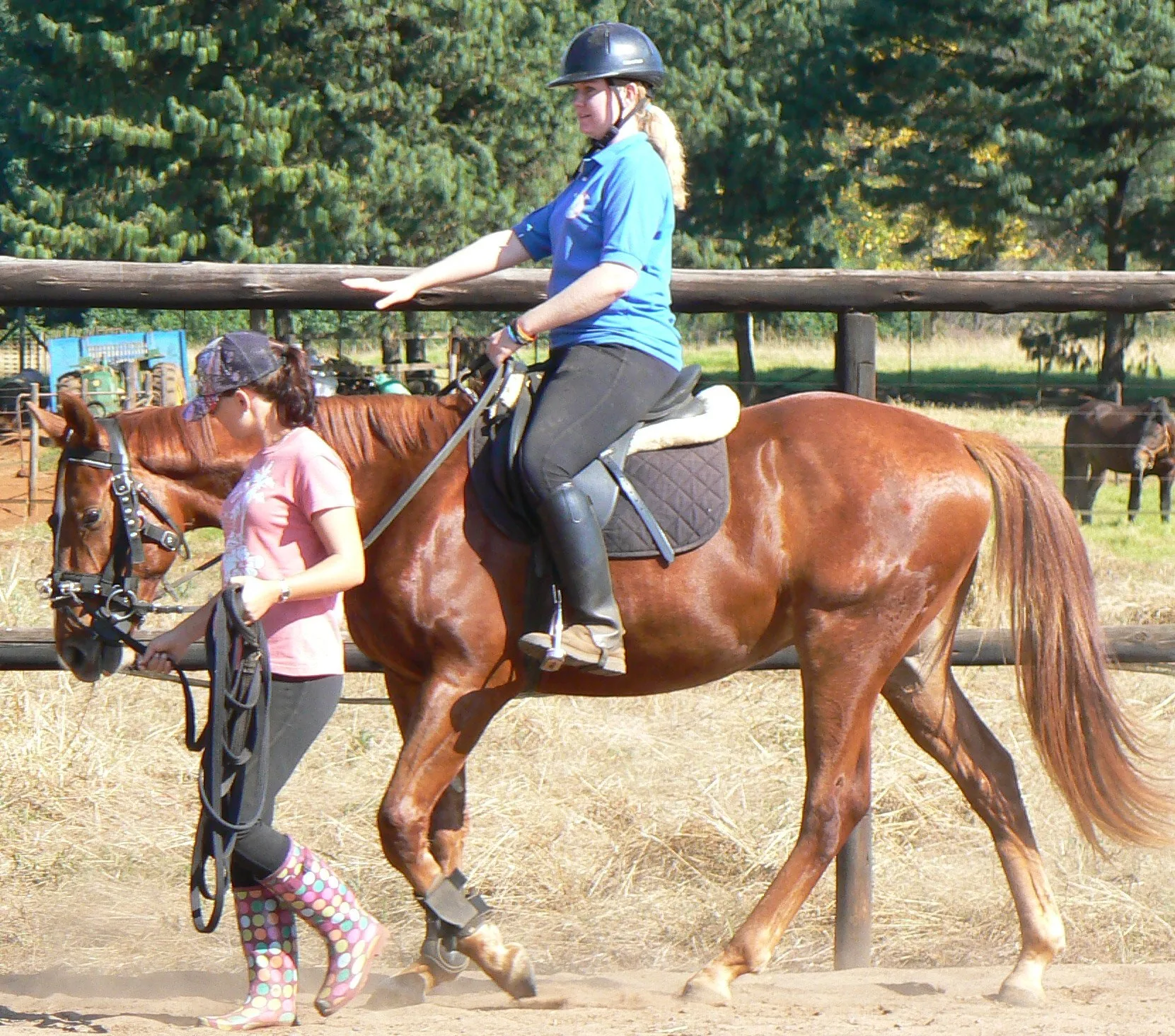
Building Confidence and Progressing Training
After the initial backing, the journey into more advanced training begins. This phase is about reinforcing confidence and gradually introducing new challenges to your horse, while maintaining a balance between discipline and positive reinforcement.
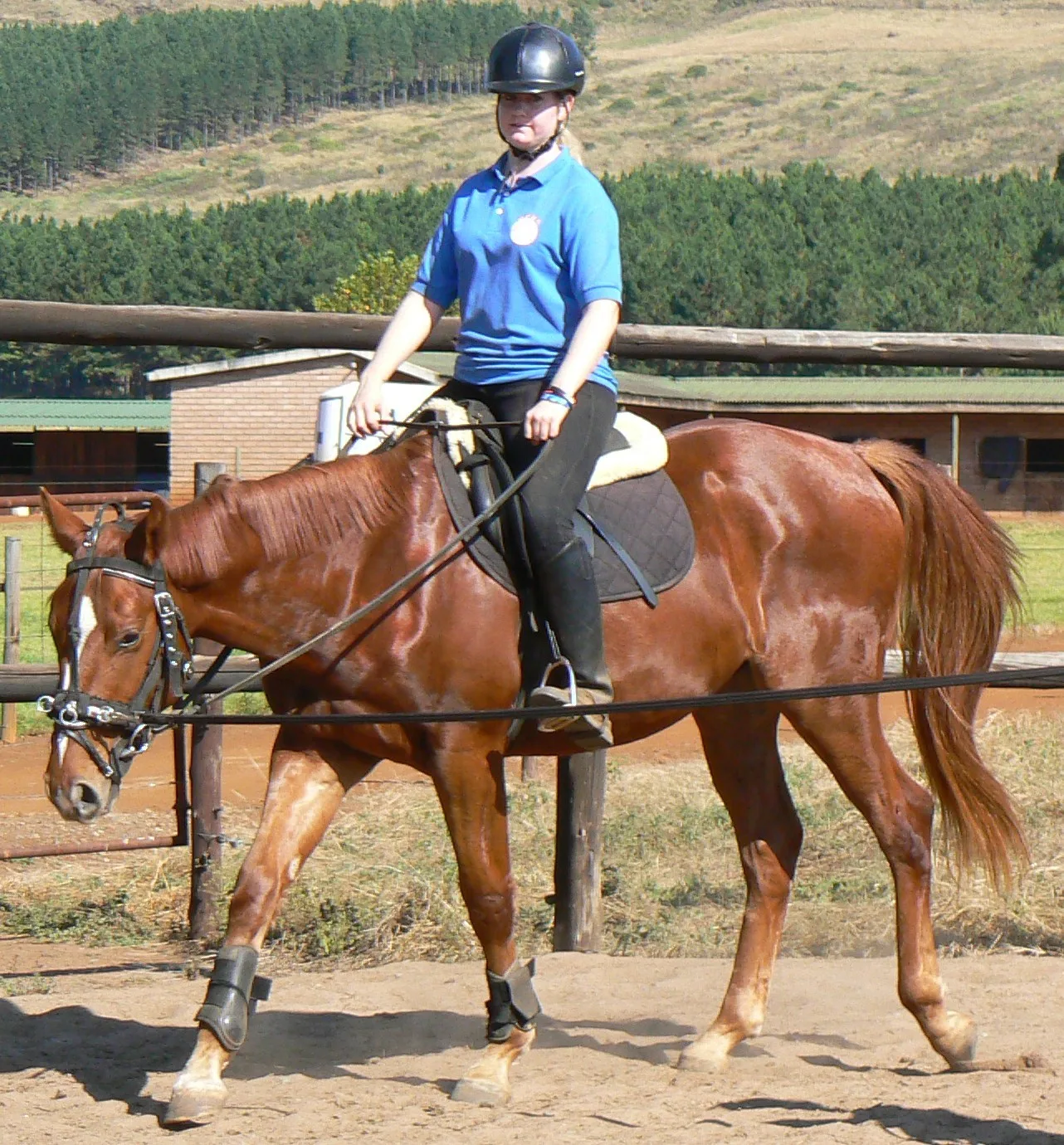
Developing a Consistent Routine Post-Backing
Consistency is key in developing confidence in your horse post-backing. Establish a routine that is predictable for the horse, which could include regular grooming, feeding, and training times. This routine helps in creating a sense of security and trust. Training sessions should be short but frequent, allowing the horse to absorb and retain the lessons without feeling overwhelmed.
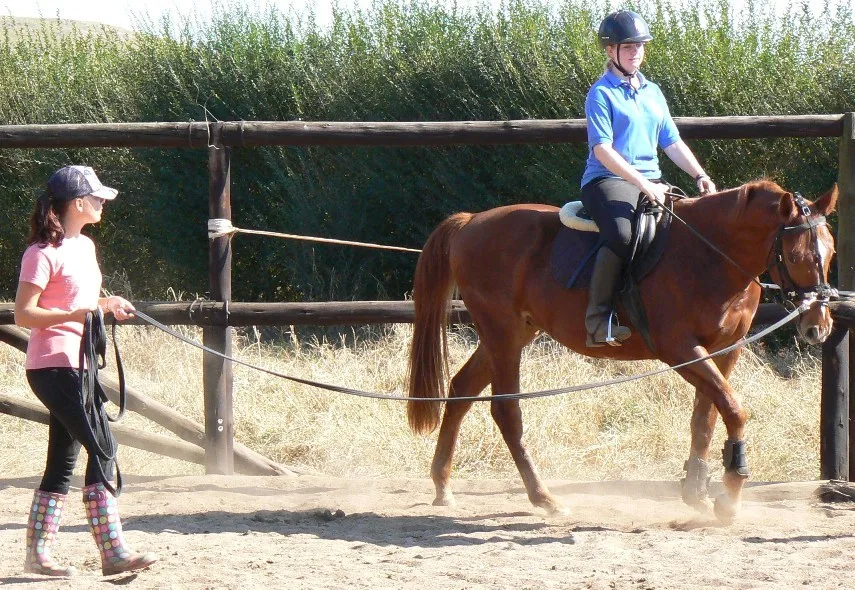
Gradually Introducing New Experiences and Training Elements
Once your horse is comfortable with basic riding cues, begin to introduce new experiences gradually. This could include:
- Varying the Training Environment: Introduce different areas to ride, like a change from the arena to a quiet trail. This helps the horse adapt to new environments while under saddle.
- Incorporating Obstacles: Simple obstacles like poles or small cones can be used to teach agility and responsiveness.
- Introducing Other Horses: Riding with other calm and experienced horses can encourage your young horse and provide learning opportunities through mimicry.
Each new experience should be introduced in a controlled manner, ensuring the horse feels safe and comfortable.

Always use Positive Reinforcement
Celebrate the small victories and progress your horse makes with verbal praises, gentle pats, or occasional treats. This positive reinforcement not only strengthens the bond between you and your horse but also reinforces the behavior you want to encourage.
It is also important to be aware of your horse’s limits. If your horse shows signs of stress or confusion, it’s better to slow down and revisit the basics rather than push too hard. The goal is to build a confident, willing partner, not to overwhelm the horse.
As you progress, remember that training a young horse is a journey of patience and persistence. Every horse will have its unique strengths and challenges, and as you become more experienced, your intuition will guide you in tailoring the training to suit your horse’s individual needs. The bond and trust that you build during this time are invaluable and will set the stage for a lifetime of partnership.


Addressing Challenges and Setbacks
In the journey of backing and training a young horse, encountering challenges and setbacks is a natural part of the process. Understanding these issues and knowing how to effectively address them is crucial for the well-being and progress of both horse and rider.
Common Issues That May Arise During the Backing Process
- Resistance to Saddle or Rider: Some horses may show discomfort or resistance to the saddle or the presence of a rider. This could be due to physical discomfort, fear, or misunderstanding of what is asked.
- Fear and Anxiety: New experiences can sometimes lead to fear or anxiety in young horses. Signs include shying away, bolting, or freezing.
- Difficulty in Understanding Cues: Young horses might initially struggle to understand and respond to riding cues, leading to confusion and frustration for both horse and rider.
Strategies for Overcoming Fear or Resistance in Young Horses
- Take a Step Back: If a horse shows fear or resistance, it’s often helpful to return to a point in training where the horse was comfortable and confident. Rebuilding from this point can help overcome the issue.
- Consistency and Patience: Consistently working through the basics can reinforce training and build confidence. Be patient; progress may be slow, but it is rewarding.
- Positive Reinforcement: Reinforce positive behavior with praise, gentle patting, or treats. Positive reinforcement can be a powerful tool in overcoming fear or resistance.
- Desensitization Techniques: Gradually exposing the horse to the source of fear in a controlled and reassuring manner can help in overcoming anxieties.
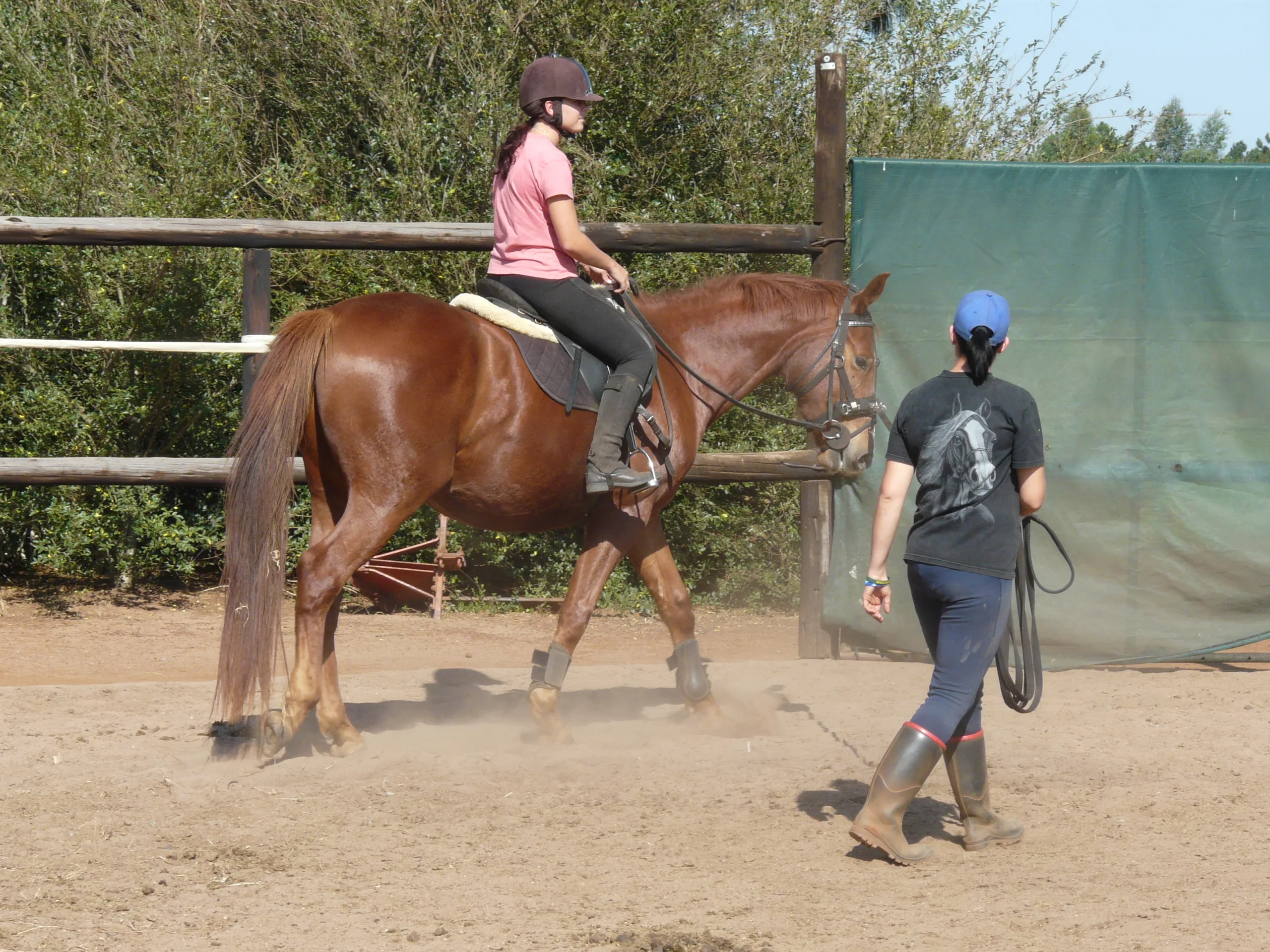
When to Seek Professional Help or Advice
- Persistent Issues: If a particular issue persists despite your best efforts, it might be time to seek advice from a more experienced trainer or behaviorist.
- Safety Concerns: If at any point you feel that your safety or the horse’s safety is at risk, it’s crucial to consult a professional. This is especially important for issues like bucking, rearing, or bolting.
- Health-Related Concerns: If you suspect that a horse’s resistance or behavior change is due to pain or a health issue, consult a veterinarian. Discomfort from dental problems, back pain, or other health issues can significantly affect a horse’s behavior.
Remember, setbacks are not failures but opportunities to understand and bond with your horse better. Each horse is an individual, and what works for one may not work for another. Your extensive experience with horses will be invaluable in navigating these challenges, but even the most seasoned horse people can benefit from fresh perspectives and professional advice when needed.

Long-Term Goals and Development
Setting long-term goals for a young horse post-backing is a crucial step in shaping its future. These goals should not only be realistic but also consider the horse’s physical and mental development over time. Patience and understanding are key elements in nurturing a well-rounded equine partner.
Setting Realistic Expectations and Goals for a Young Horse Post-Backing
- Individualized Milestones: Recognize that each horse develops at its own pace. Set milestones based on your horse’s individual temperament, breed, and physical capabilities. These could range from mastering basic commands to preparing for specific disciplines.
- Incremental Progress: Break down your long-term goals into smaller, achievable steps. This approach helps in monitoring progress and adjusting training methods as needed. Celebrate the small victories along the way, as they pave the path to achieving your larger objectives.
- Balanced Development: Ensure that your goals encompass not just physical training but also mental and emotional development. A horse that is confident, mentally stimulated, and emotionally stable is as important as one that is physically adept.
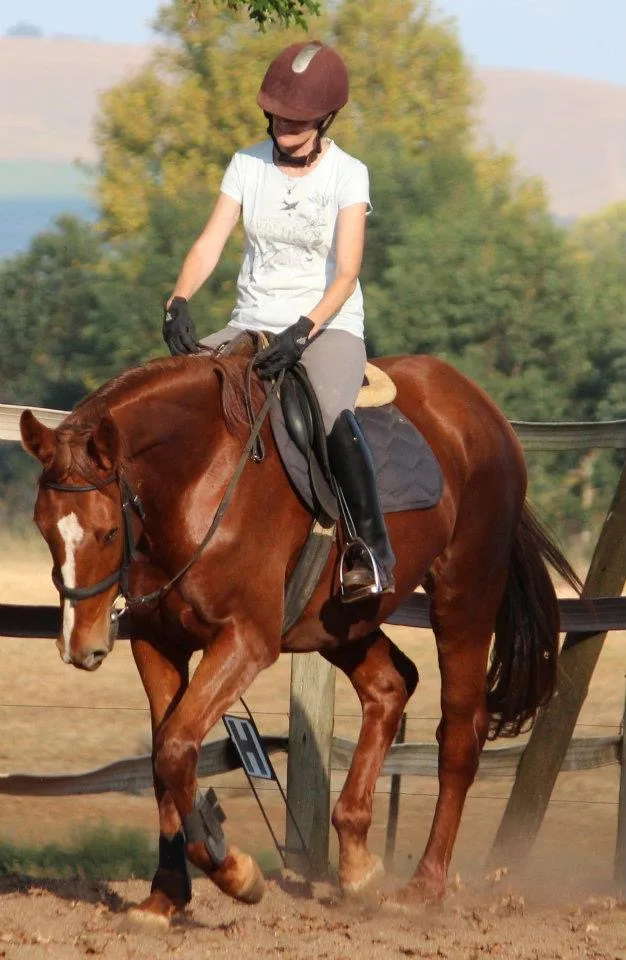
The Role of Backing in the Horse’s Overall Training and Career
- Foundation for Future Training: Backing is more than just getting a horse used to a rider; it sets the tone for all future training. The trust and understanding developed during this phase form the bedrock of your horse’s training career.
- Preparing for Specialization: Whether you aim for dressage, show jumping, trail riding, or any other discipline, the lessons learned during backing are fundamental. They provide the necessary groundwork for specialized training.
- Building a Versatile Equine Partner: Early training and experiences shape the horse’s adaptability and willingness to learn new skills, making it a versatile and reliable partner in various situations.
the Importance of Patience and Understanding
- Respecting the Horse’s Timeline: Understand and respect that each horse has its unique timeline for development. Rushing the process can lead to stress, resistance, and potential setbacks.
- Continual Learning and Adaptation: Your role involves continual learning and adaptation. Stay informed about training techniques and equine psychology to better understand and support your horse’s development.
- Nurturing a Lifelong Bond: The ultimate goal is to develop a strong, lasting bond with your horse. This relationship is built on mutual respect, understanding, and patience, forming the core of all your training endeavors.
Setting realistic long-term goals for a young horse post-backing requires a holistic approach. It’s about nurturing a well-rounded, confident, and willing equine partner who trusts and respects you as much as you do them. Your experience and love for horses will be your greatest asset in this rewarding journey.
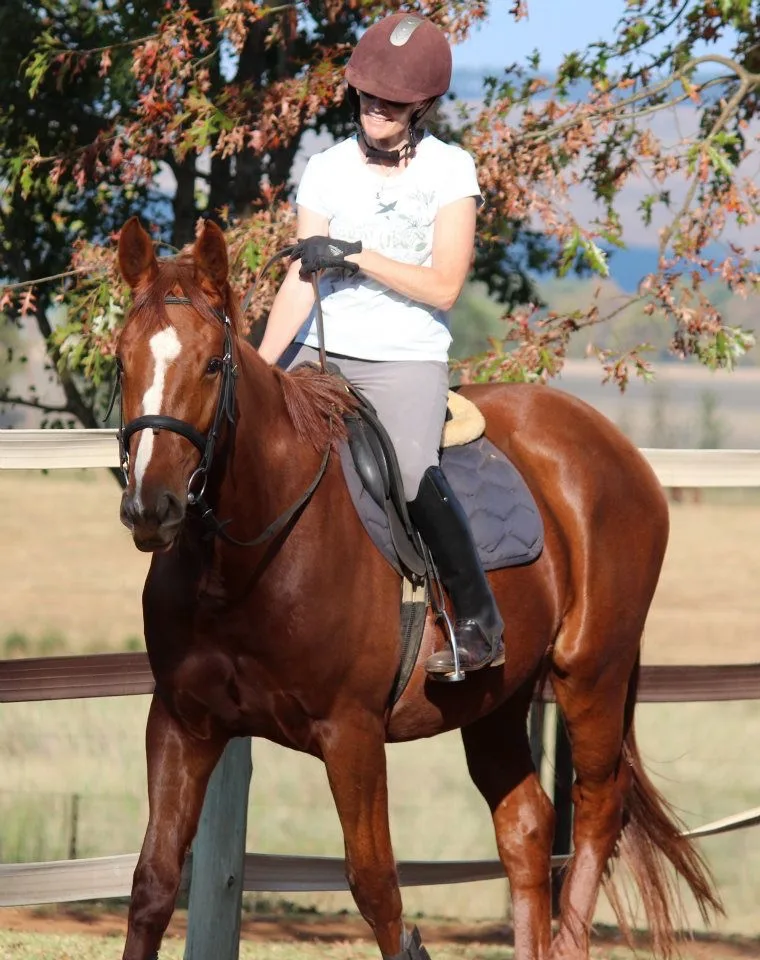
Conclusion
Backing a young horse is a journey that is about building a foundation of trust, understanding, and mutual respect. These are the key points of this vital stage and its significance in the relationship between horse and rider:
Summarizing the Key Points of Backing a Young Horse
- Understanding the Young Horse: Recognizing the psychological and physical characteristics of young horses is crucial. It’s the first step in building a bond of trust, which is essential before beginning the backing process.
- Preparation for Backing: Groundwork such as lunging, leading, and desensitization, along with familiarizing the horse with tack, prepares both horse and rider for the backing process. Ensuring the horse is physically ready through health checks is equally important.
- The Backing Process: This stage requires patience, empathy, and a step-by-step approach. Techniques for mounting, understanding the horse’s reactions, and adjusting your methods accordingly are vital for a successful backing.
- Building Confidence and Progressing Training: After backing, developing a consistent routine, introducing new experiences, and balancing discipline with positive reinforcement is key to nurturing a confident and well-trained horse.
- Addressing Challenges and Setbacks: Recognizing common issues and employing strategies to overcome them, including knowing when to seek professional advice, ensures the health and well-being of the horse during training.
- Long-Term Goals and Development: Setting realistic goals, understanding the role of backing in the horse’s overall training, and emphasizing patience throughout the horse’s development are critical for long-term success.
the Importance of This Stage in Building a Strong, Trusting Relationship Between Horse and Rider
Backing is more than a training phase; it’s the cornerstone of a lifelong partnership. The experiences, lessons, and bonds formed during this time lay the groundwork for everything that follows. It’s an opportunity to understand and connect with your horse on a deeper level, creating a relationship based on trust, respect, and mutual understanding.
As someone with over 40 years of experience with horses, you know that the journey with each horse is unique and filled with learning opportunities. The backing process is a testament to your dedication, expertise, and love for these magnificent creatures. It’s a time when the foundations of a strong, enduring bond are laid, shaping the future of both horse and rider.
In summary, backing a young horse is an art that requires skill, patience, and a deep understanding of the equine mind and body. It’s a critical stage that not only sets the tone for the horse’s training and development but also for the kind of relationship you will share with your horse for years to come.
Additional Resources
Expanding your knowledge and understanding of horses is a lifelong journey. To assist you in this quest, especially in the realm of backing young horses, the following resources are recommended. These include books, videos, courses, and insights from other experts in the field, providing a comprehensive learning experience.
Recommended Books
- “The Art of Horsemanship” by Xenophon: An ancient yet timeless work, offering foundational knowledge in horse care and training.
- “The Principles of Riding” by the German National Equestrian Federation: This book provides a detailed approach to horse training, including the backing process.
- “Complete Horse Riding Manual” by William Micklem: A comprehensive guide covering various aspects of horse riding and training, including sections specifically on young horses.
Informative Videos and Courses
- “Warwick Schiller’s Performance Horsemanship”: His online video series covers a range of topics, including backing young horses, with an emphasis on understanding horse psychology.
- “Natural Horsemanship Training” with Pat Parelli: Parelli offers online resources that delve into natural horsemanship techniques, ideal for building trust during the backing process.
- EquestrianCoach.com: This website provides a wealth of instructional videos from top professionals in the field, including step-by-step guides on backing young horses.
Possible Interviews or Insights from Other Experts
- Monty Roberts: Known as the ‘Man Who Listens to Horses’, his methods on gentle breaking and backing could provide invaluable insights.
- George Morris: A legend in the show jumping world, his teachings and perspectives, especially on discipline and training, are highly respected.
- Charlotte Dujardin: As an Olympic dressage champion, her insights on backing and training for dressage would be particularly valuable.
Additional Online Resources
- TheHorse.com: This website offers articles, webinars, and podcasts on a variety of horse-related topics, including young horse training.
- British Horse Society (BHS) Resources: BHS provides extensive materials on horse care and training, suitable for both beginners and experienced riders.
By exploring these resources, you can deepen your understanding and enhance your skills in backing and training young horses. Whether it’s through reading, watching, or listening to experts, each resource offers unique perspectives and methods, contributing to your vast knowledge and experience in the horse world. Remember, the journey of learning is never complete, especially when it comes to understanding and connecting with these magnificent animals.
Please let me know of your experiences backing horses or any questions I might be able to help you with. I am always happy to help in any way I can.
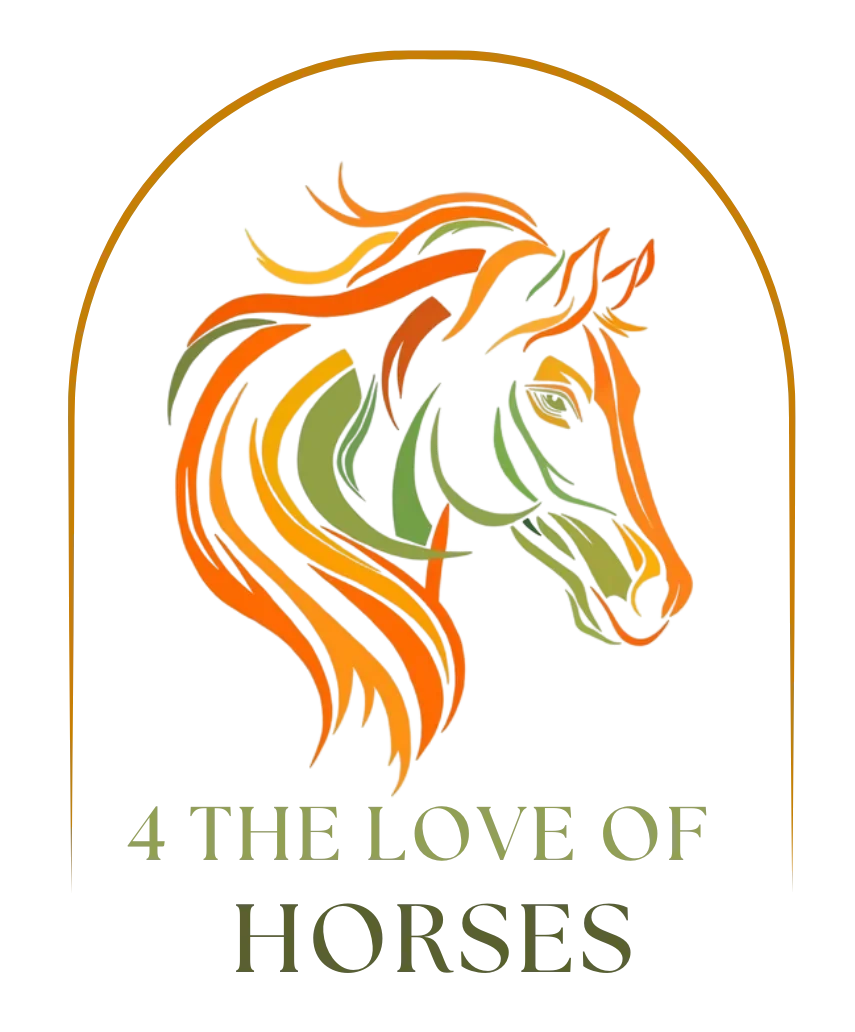
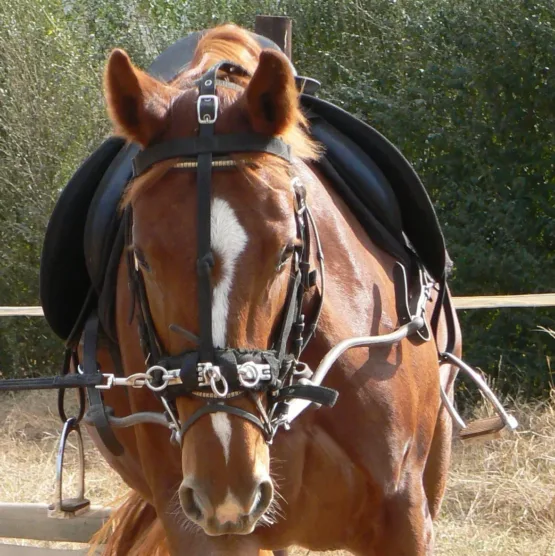
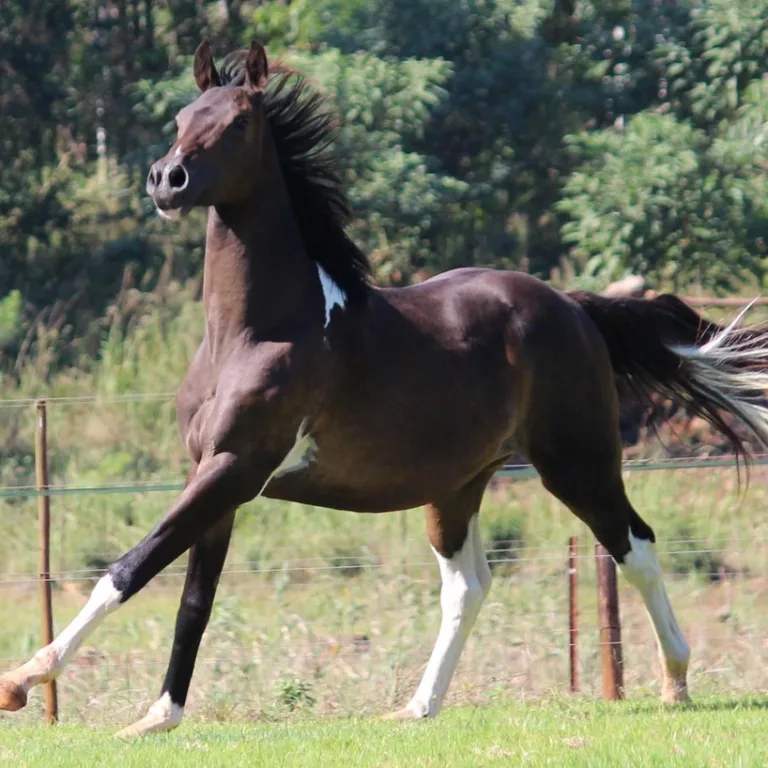
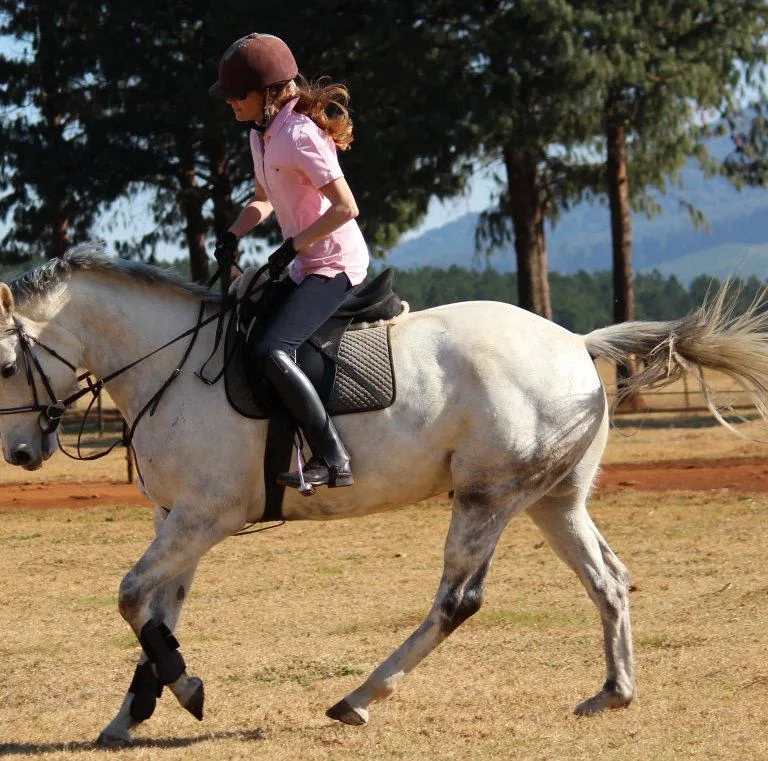
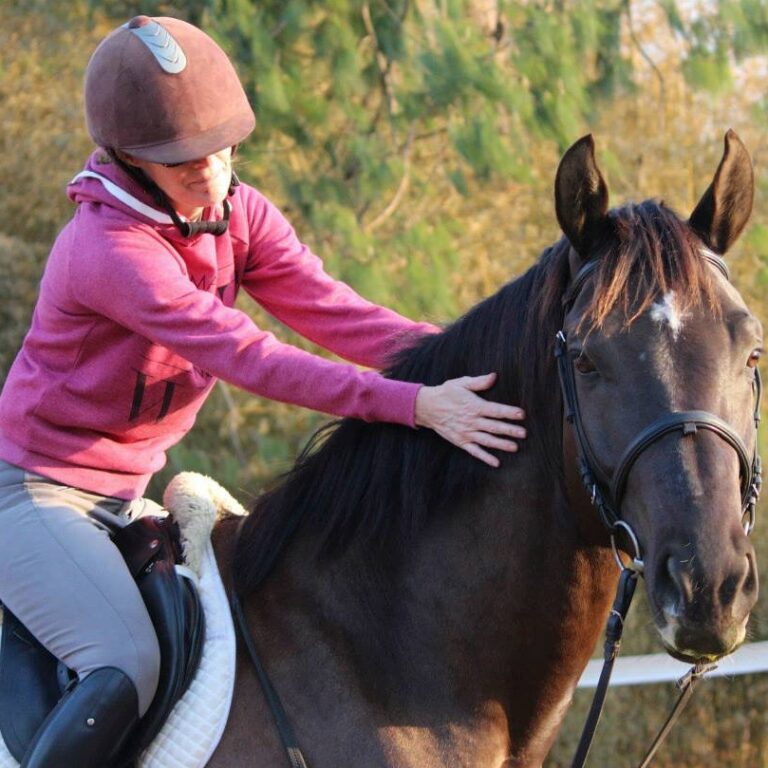
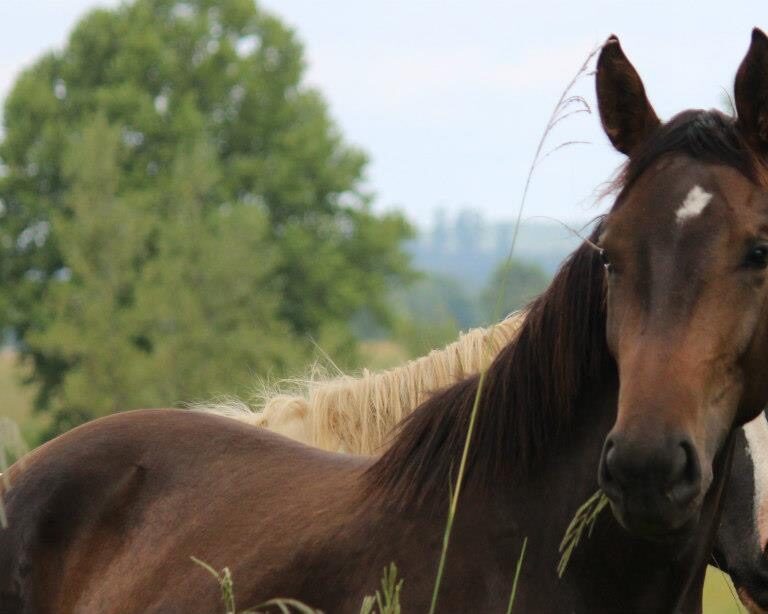
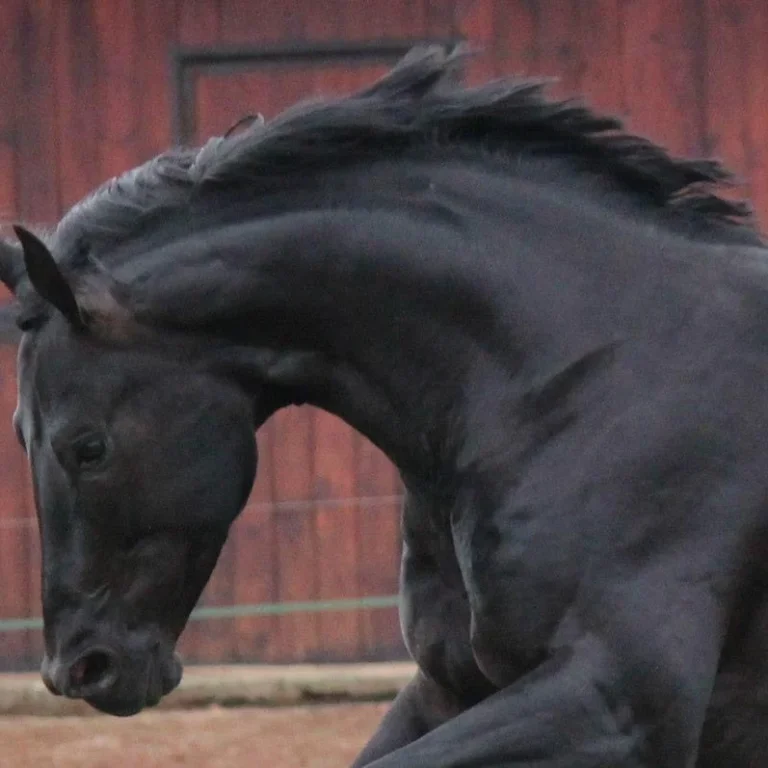
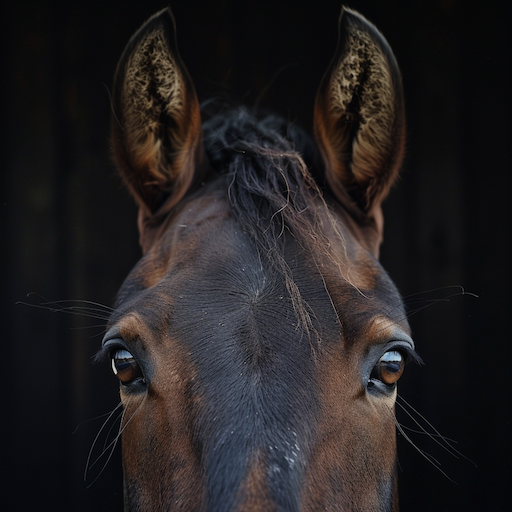
Leave a Reply